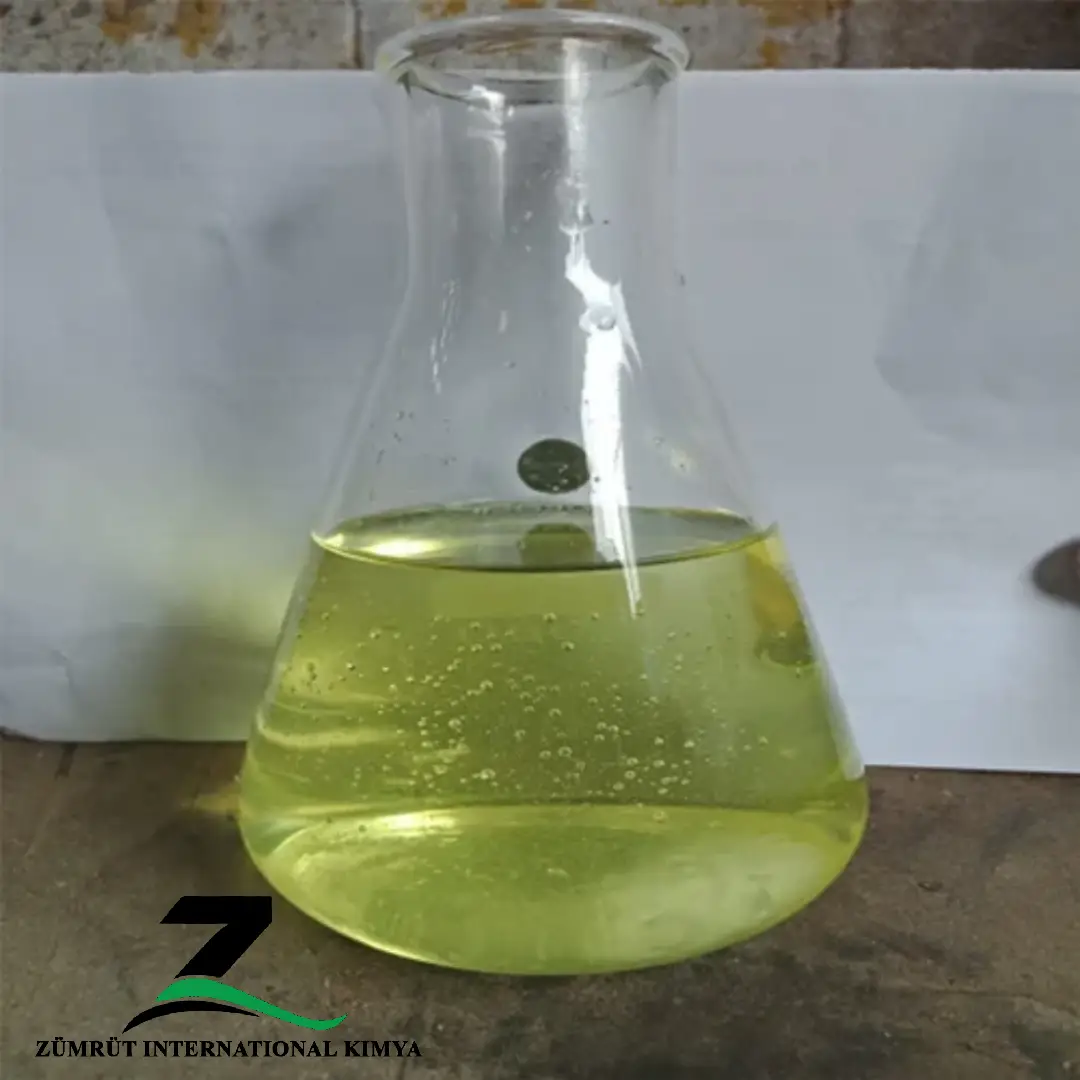Sodium hypochlorite Description
- Chemical Name: Sodium Hypochlorite
- Chemical Formula: NaOCl
- Appearance: Clear, pale greenish-yellow liquid
- Odor: Characteristic chlorine-like smell
- Concentration (typically): 10–15% available chlorine (commercial-grade solutions)
General Overview:
Sodium hypochlorite is an inorganic compound most commonly used as a disinfectant, bleaching agent, and oxidizing agent. It is the active ingredient in liquid household bleach and is widely used in water treatment, sanitation, and industrial processes.
Key Properties:
- Molecular Weight: 74.44 g/mol
- Density: ~1.1–1.2 g/cm³ (depending on concentration)
- Solubility: Completely soluble in water
- Stability: Decomposes in sunlight or heat; should be stored in a cool, dark place.
Applications:
- Water Treatment: Disinfection of drinking water, wastewater, and swimming pools
- Sanitization: Used in hospitals, food processing, and hygiene industries
- Household Use: Bleaching, stain removal, and surface disinfection
- Textile & Paper Industry: Bleaching of fabrics and pulp
- Chemical Manufacturing: Intermediate in various oxidation reactions
Packaging:
- Plastic drums (25L, 50L)
- IBC tanks (1000L)
- Tanker trucks (bulk supply)
Safety and Handling:
- Strong oxidizer; avoid contact with organic materials and acids.
- Causes skin and eye irritation; use personal protective equipment (PPE).
- Store in a cool, well-ventilated area away from sunlight and incompatible substances.

Sodium hypochlorite Uses
Chlorine bleach is primarily known as a laundry cleaning and disinfecting product that destroys germs and helps make white clothes whiter. Bleach also has a wide range of other applications
- Safe water
Before chlorine-based disinfectants like hypochlorite solutions were routinely added to U.S. drinking water beginning over 100 years ago, many people became sick and died of waterborne diseases, such as cholera and typhoid fever. Chlorination destroys most waterborne germs to help keep drinking water safe. During emergencies, when the normal drinking water supply is interrupted or contaminated, chlorine bleach can safely disinfect non-potable water. Chlorine bleach also helps keep swimming pools free of waterborne germs that can cause diarrhea, swimmer’s ear, and “hot tub rash.” - Safe food production and preparation
Chlorine bleach added to water can destroy germs associated with raw foods. These solutions also can disinfect food production equipment, food preparation surfaces, and food-transportation containers. Grocery stores and restaurants use bleach solutions to help sanitize food storage and preparation surfaces.
Sodium hypochlorite Medical uses
Chlorine bleach solutions help disinfect many types of surfaces, including reusable equipment in hospitals, medical labs, doctors’ offices, and nursing homes, to help prevent the spread of infectious illnesses among patients, residents, and healthcare professionals.
- Household disinfection
Consumers can use diluted chlorine bleach solutions to help disinfect household surfaces in bathrooms and the kitchen. Using bleach solutions to disinfect frequently touched surfaces also can help prevent the spread of colds, flu, norovirus, and other infectious illnesses. During natural disasters, such as flooding, chlorine bleach can disinfect contaminated surfaces.
Dosage of Sodium Hypochlorite
- Potable water typically requires 15mls per m³
- Pools and Spas typically require 30 to 50mls/m3
- Grey water typically requires 40 to 100mls/m³
Sodium hypochlorite Packaging
Sodium hypochlorite is available in tankers and IBC tanks – drums. Other packaging may be considered on request.
Storage and handling Supplier Sodium Hypochlorite
In applications requiring small packaging, sodium hypochlorite solution should be stored and shipped in suitable plastic containers. Storage stability is greatly affected by light, heat, pH, and the presence of certain heavy metal cations. Colored or opaque plastic bottles will increase stability.
The temperature of any storage or shipping area should not exceed 29° C (85° F); preferably, it should stay below 24° C (75° F). Avoid contamination of these solutions with heavy metal cations such as nickel or cobalt and keep the solution pH above 11.5.
hypochlorite solution is a strong oxidizer and can be a moderate fire hazard because of chemical reactions with reducing agents. It is particularly dangerous when heated, or comes into contact with an acid or acid fumes because it can emit toxic chlorine fumes.
Supplier Sodium Hypochlorite Specification
| General | |
| CAS No. | 7681-52-9 |
| Invent Hazard Material (IMO/EU) classification | C-50 |
| Physical properties | |
| Appearance | Green/yellow liquid |
| Available Chlorine | 10 to 15% |
| Density [g/ml] | 1.16 to 1.17 |
| Freezing Point [°C] | -15 to -18 C |
| Odor | Chlorine |
Sodium hypochlorite Specification



